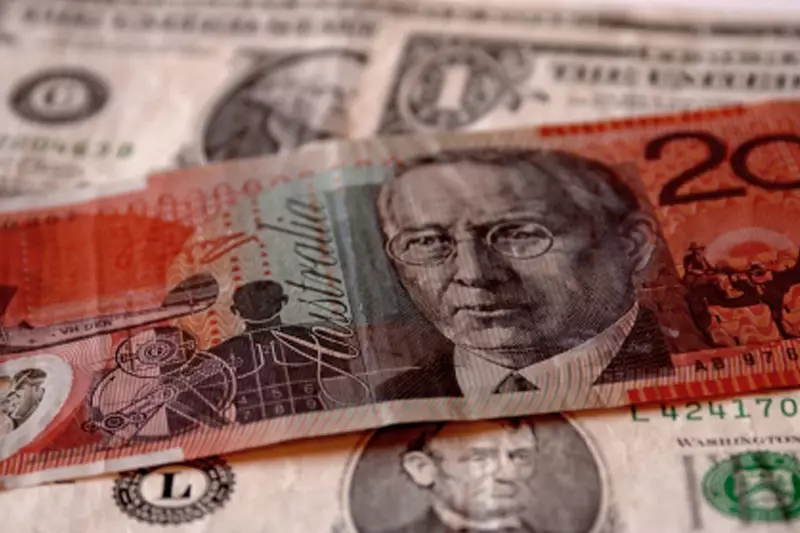The currency markets in Asia are experiencing a period of cautious stability as traders and investors navigate the complexities brought about by geopolitical factors and impending monetary policies. In recent weeks, the spotlight has been firmly placed on the U.S. presidential race, where potential shifts in power could have widespread implications for global markets. This article delves into the current currency landscape, focusing on the numerical dance of Asian currencies while considering the ripple effects of U.S. economic indicators and local fiscal policies.
As the U.S. election cycle heats up, the currency markets have been deeply influenced by the so-called “Trump trade.” As current polls suggest a tightly contested race between Donald Trump and Kamala Harris, uncertainty rises, causing fluctuations in investor confidence and, by extension, the strength of the U.S. dollar. Amid this backdrop, many Asian currencies faced losses through October, largely owing to the speculation surrounding the election outcome. Traders have shown a tendency to play it safe, waiting for more definitive signals before making significant moves, hence keeping most Asian currencies within a narrow range.
Moreover, the dollar has regained some footing after suffering recent losses. This stabilization can be attributed to traders unwinding positions linked to the “Trump trade,” as speculations around his potential return to the presidency speculate an alteration in U.S. economic policy. In particular, the anticipation of the Federal Reserve’s decisions in light of upcoming meetings has heightened the considerations surrounding the dollar’s performance in the Asian markets.
The Australian dollar has been one of the few currencies to demonstrate slight resilience during this period. Following the Reserve Bank of Australia’s (RBA) decision to maintain unchanged interest rates, the AUD/USD pair gained 0.1%. The RBA’s commitment to holding rates steady indicates a cautious approach to monetary policy, reflecting concerns regarding persistent inflation. Importantly, the RBA has signaled that rates will remain elevated for an extended period, creating a scenario potentially favorable for the Australian dollar amid other unsteady global currencies.
However, despite the seemingly positive outlook, the RBA’s caution regarding future growth is noteworthy. Economists predict further economic slowdown in Australia, leading to a bittersweet situation for the currency. The high-interest rate environment is intended to combat inflation yet raises concerns regarding the overall economic performance, placing the Australian dollar at a crossroads where minor gains could easily reverse if economic data starts to reflect a deteriorating situation.
In tandem with these dynamics, broader Asian currencies remained relatively flat, witnessing minimal activity as traders grappled with the anticipation surrounding the U.S. elections and the Fed’s impending meeting. The lack of dramatic shifts underscores a broader hesitance among market participants, seeking clearer economic signals before engaging in large trades.
The Chinese yuan saw a slight increase against the dollar, rising by 0.1%, amid expectations further fiscal stimulus may be set in motion during China’s National People’s Congress. In contrast, the Japanese yen has faced downward pressure, nearing a three-month low, illustrating a struggle against other major currencies. Additionally, South Korea’s won benefited from softer consumer inflation data, appreciating by 0.5%, a move that can influence Bank of Korea’s potential interest rate cuts.
Additional focus this week will be trained on the Federal Reserve meeting, where many expect a more conservative cut of 25 basis points compared to the previous month’s larger reduction. This should be closely observed by those in the markets, particularly as recent data indicates stickiness in U.S. inflation amidst an ongoing labor market decline. Fed Chair Jerome Powell’s commentary during the meeting may provide crucial indicators that shape investor sentiment and strategies going forward.
While the outlook for Asian currencies is cautiously optimistic, prevailing uncertainties, especially with U.S. political themes and central bank policies taking center stage, will likely keep traders vigilant. As such, the Asian currency landscape remains a complex interplay of local economic resilience against broader global challenges, demanding adaptable strategies from investors in a fluctuating arena.
The situation for Asian currencies is characterized by a tension between local economic policies and broader geopolitical uncertainties. Investors must remain keenly aware of imminent events that threaten to disrupt what seems like a fragile equilibrium. As they sift through data highlights, the upcoming days in currency trading will undoubtedly reflect the ongoing narrative of caution, optimism, and the persistent quest for stability amid unpredictable external influences.


Leave a Reply